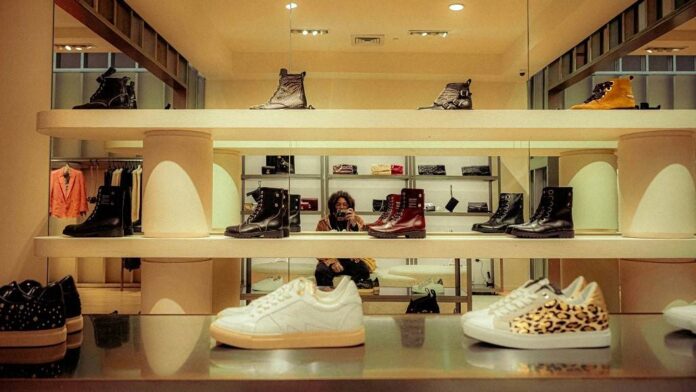The North America luxury footwear market is undergoing a pronounced reset as shoppers pivot toward more attainable prices and comfort-first silhouettes. Shoes priced below 250 dollars now make up 64% of pairs bought in North America, far outstripping the global average and underscoring consumers’ tighter spending priorities. Worldwide, the share of footwear sold under 250 dollars has also risen, from 38% in 2021 to 42% in 2025, signalling a clear move away from traditional high-ticket luxury. Mid-tier options are gaining traction too: while purchases in the 500–1,000 dollar band have fallen from 34% to 25%, styles in the 250–500 dollar range have edged up from 25% to 29%. Collectively, these shifts have pushed the average spend per pair down by 11%, from 425 dollars in 2021 to 378 dollars in 2025.
Joor’s senior VP of marketing, Amanda McCormick Baca, explained, “Joor’s exclusive analysis of the global footwear market provides essential data-driven insights into significant shifts in the footwear landscape. Economic uncertainty has driven worldwide demand for more accessible price points, evidenced by a steady decrease in average retail price. Simultaneously, comfort-driven styles are evolving, with sandals and flats gaining market share as buyers move past the peak of sneaker saturation. Our actionable report provides brands and retailers with the market intelligence they need to maximise their growth strategy in the coming seasons.”
Regional patterns add further texture to this recalibration. North America shows the strongest tilt toward lower price bands, but Asia-Pacific is tracking a similar direction. In APAC, the share of shoes in the 500–1,000 dollar bracket has almost halved, sliding from 43% of retailer purchases in 2021 to 22% in 2025, while demand for sub-250 dollar products has climbed from 20% to 37%. By contrast, the EMEA region (Europe, Middle East and Africa) remains the most premium-leaning market, with 41% of units still sold above 500 dollars, compared with 28% in APAC and just 17% in North America. For brands, this divergence underscores the importance of tailoring assortments by region rather than assuming a single global price architecture.
Style preferences mirror these economic undercurrents. Sneakers retain their crown as the world’s top footwear category, accounting for 52% of pairs sold in 2025—down slightly from a 57% high in 2023 but still above their 48% share in 2021. As the category matures, other comfort-driven styles are capturing more space on shelves and in wardrobes. Sandals have lifted their share from 16% to 24%, and flats have grown from 6% to 8%, pointing to a broader rebalancing of casual luxury. Boots, on the other hand, have seen their relevance shrink sharply, dropping from 17% of the market in 2021 to just 7% in 2025.
Digital innovation is reinforcing these structural shifts. Joor’s July rollout of a dedicated digital marketplace is designed to knit brands and retailers more closely together, giving labels a direct way to showcase available-to-sell inventory and respond at speed to changing demand patterns. For buyers, this creates a more agile route to secure the right mix of sizes, styles and price points; for brands, it tightens the feedback loop between product performance and future assortments.
Taken as a whole, these dynamics point to a luxury landscape in transition. The North America luxury footwear market is setting the tone for a new equilibrium in which accessible pricing, comfort-led design and rapid fulfilment are no longer niche strategies but mainstream expectations. For any label aiming to compete in affordable luxury footwear, the mandate is clear: blend style with wearability, sharpen price positioning, and build the digital capabilities needed to follow the consumer wherever demand moves next.


































